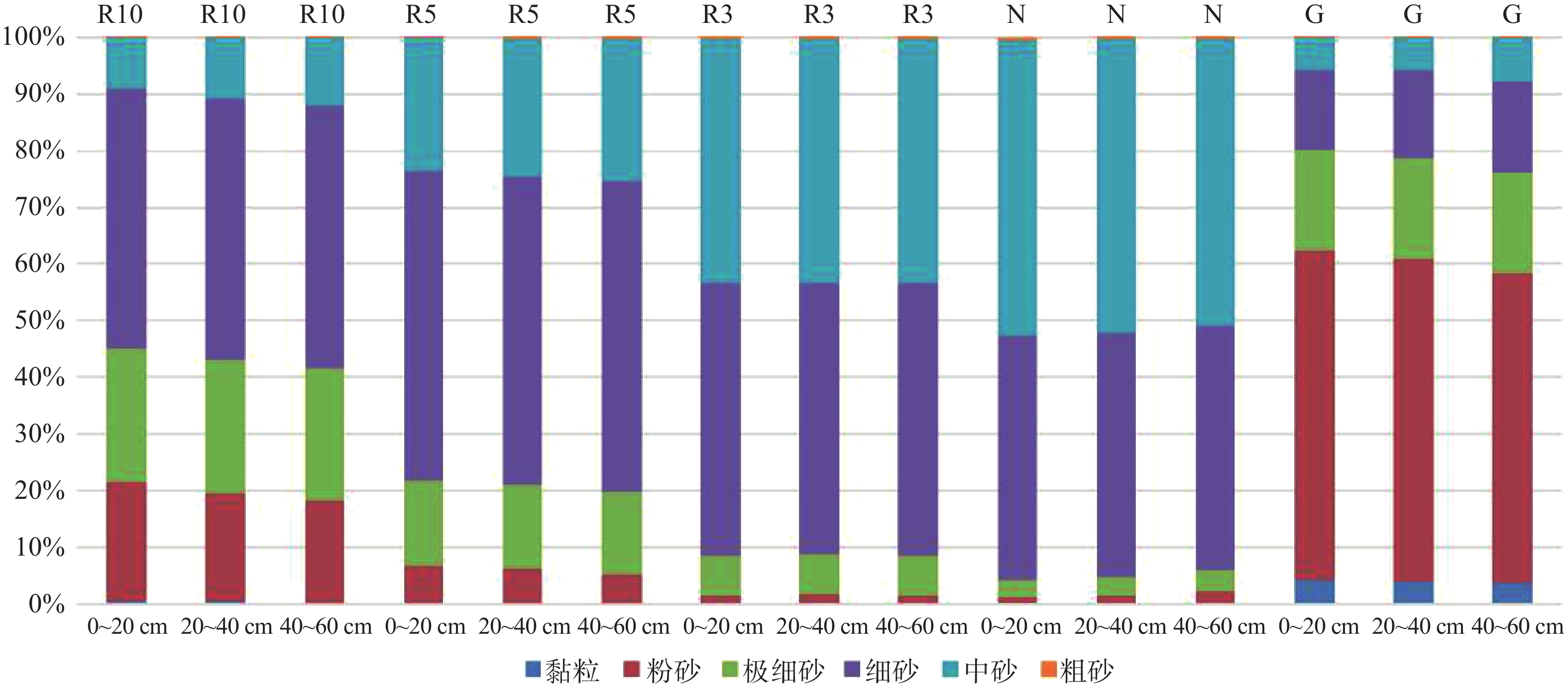-
川西北地区地处青藏高原东南缘,是长江、黄河上游重要的水源涵养地,具有特殊的生态区位和重要的生态保护功能,对长江、黄河流域水资源保护和国家生态安全有着重要的作用和影响。川西北地区草原受自然和人为原因加速了草原的沙化[1-2],自然原因包括地形地貌和水文母质因素、气候因素;人为成因包括过渡放牧,滥垦乱挖和疏干沼泽等因素。其中,自然成因是造成研究区沙化的基础性因素,人为不合理的经济活动,在一定程度上引发和大大加速了草原的沙化;而人为因素是造成由沼泽草甸-草原草甸-草原草地-退化草地退化的主要成因,其中以过度放牧最为普遍和严重[3]。
目前川西北草原沙化最严重、研究最多的多集中流动沙地上,流动沙地的形成主要是风力作用使地表刷地沙地土壤发生变化[4-5],对沙地土壤的研究多集中在不同地类土壤机械组成对比、土壤有机质含量等方面,苏志珠等[6]认为不同地类土壤机械组成存在差异,农田主要为粉粒,人工林主要为极细砂、粉砂,荒地优势粒级为粉粒;吴永胜等[7]认为在沙漠化监测与评价指标中,土壤机械组成是重要的监测指标之一,其粒级组分的级配和含量直接影响川西北高原土壤的理化性质等;彭佳佳等[8]认为随着生态修复年限的增加,植被盖度和高度显著提高,各土层土壤有机质、全氮、碱解氮含量均呈现增加特征。游秋明[9]认为pH值均随沙化程度的加重逐步升高,而有机质、全N、水解N、全P含量则逐步降低。但关于川西北高寒地区不同年限植被恢复后不同深度的土壤机械组成研究鲜见报道。本试验采用时空替代法,即在立地条件一致或相近的条件下,在一定的空间尺度内,以不同地点上选取不同治理年限的流动沙地来代替同一生长地点上治理的不同治理年限的流动沙地,探讨川西北高寒沙地植被恢复后不同恢复年限对沙化土地土壤机械组成的研究,以期对川西北沙化治理及监测评估提供理论依据。
-
研究区位于川西北地区若尔盖县辖曼乡、阿西乡,平均海拔在3 600 m以上。年平均气温1.1 ℃,极端最低气温−36.2 ℃,年降水量为753 mm,主要集中在5—10月。气候类型属于大陆性高原寒温带季风气候,年均日照时数2 400 h,年均积雪90 d左右,无绝对无霜期。该地区植物群落中主要优势物种有紫羊茅、老芒麦、四川嵩草、垂穗披碱草、早熟禾等。
-
于2019年夏季,采用时空替代法,以若尔盖县高寒沙地示范区内未治理流动沙地(N)、植被恢复年限分别为3年、5年、10年的高寒沙地(R3、R5、R10)样地作为研究对象,研究土壤的物理性状,即流动沙地的机械组成。笔者查阅大量关于沙化成土的研究,发现沙化土地经过多少年治理能变成草地尚无依可查。因此,将未破坏的草地(G)所测指标作为流动沙地恢复的目标。样品采集采取多点采样方式进行[10],由于以流动沙地为研究对象,治理前植被盖度低,因此忽略植被恢复前原有植被对沙区土壤机械组成的影响(见表1)。
恢复年限 乡镇 地理坐标 海拔/m 治理措施 经度 纬度 10年(R10) 辖曼乡 102°30′34.36″ 33°44′34.37″ 3 467 沙障,植灌,种草 5年(R5) 阿西乡 102°17′13.02″ 33°55′10.42″ 3 445 沙障,植灌,种草 3年(R3) 辖曼乡 102°56′0.54″ 33°41′32.85″ 3 465 沙障,植灌,种草 未治理(N) 阿西乡 102°56′7.30″ 33°41′34.90″ 3 466 草地(G) 阿西乡 102°57′0.13″ 33°39′55.03″ 3 503 Table 1. Basic information of the test sites
机械组成的测定采用马尔文激光粒度仪(Mastersizer 2000,Malvern Instruments Ltd.)[11],机械组成的分级标准参考吴正等[12],粒级分类详见表2。
颗粒组成 粗砂 中砂 细砂 极细砂 粉砂 黏粒 分界值 500~1 000 μm 250~500 μm 125~250 μm 50~125 μm 2−50 μm <2 μm Table 2. Soil classification system
-
对比川西北不同恢复年限高寒流动沙地机械组成,以不同恢复年限样地的土壤颗粒均值作为代表值,对照(G、N)分析不同恢复年限高寒流动沙地土壤机械组成。各样地土壤机械组成测定结果见表3。
样地编号 黏粒(<2 μm) 粉砂(2~50 μm) 极细砂(50~125 μm) 细砂(125~250 μm) 中砂(250~500 μm) 粗砂(500~1 000 μm) R10 0.32%b 19.45%c 23.43%e 46.17%c 10.53%b 0.10%ab R5 0.10%a 5.99%b 14.75%c 54.66%e 24.32%c 0.17%bc R3 0.03%a 1.54%a 6.98%b 48.13%d 43.08%d 0.23%c N 0.00%a 1.57%a 3.39%a 43.08%b 51.61%e 0.34%d G 3.93%c 56.59%d 17.85%d 15.14%a 6.44%a 0.05%a Table 3. Soil mechanical composition of the sandy land in Northwest Sichuan
由表3可知,所有测试样地都以粉砂、极细砂、细砂、中砂为主,黏粒及粗砂含量极少,但不同样地之间土壤颗粒含量存在差异。沙地黏粒和粗砂含量之和不足1%,黏粒含量草地较流动沙地多,但也仅3.93%。横向对比不同样地的黏粒及粗砂含量,黏粒含量:G>R10>R5>R3>N,其中草地与其他沙地黏粒含量差异明显;各样地粗砂含量相对变化幅度低:N>R3>R5>R10>G。
沙地和草地土壤机械组成对比,沙地主要以细砂和中砂为主,两者含量之和大于50%,草地以粉砂、极细砂、细砂为优势粒级,三者之和大于90%,其中粉砂含量最多,大于50%。各沙地样地土壤颗粒含量对比,N样地以细砂和中砂为优势粒级,两者含量之和在90%以上,土壤颗粒含量表现为中砂>细砂>极细砂>粉砂>粗砂,几乎无黏粒存在;R3样地仍以细砂和中砂为优势粒级,两者含量之和在90%以上,土壤颗粒含量表现为细砂>中砂>极细砂>粉砂>粗砂>黏粒;R5样地主要以极细砂、细砂、中砂为主,三者含量之和在90%以上,土壤颗粒含量表现为细砂>中砂>极细砂>粉砂>粗砂>黏粒;R10样地较上述样地粉砂、极细砂含量增大,以粉砂、极细砂、细砂为优势粒级,三者含量之和在80%以上,粗砂含量极低,土壤颗粒含量表现为细砂>极细砂>粉砂>中砂>黏粒>粗砂。
-
由不同深度高寒沙地土壤颗粒含量变化状况(见图1)可见,黏粒、粉砂、极细砂、细砂、中砂、粗砂的百分含量在不同深度随时间的变化大致相同。黏粒百分含量低,随恢复时间的增加而增长,但增长极度缓慢;恢复初期粉砂含量较低,随恢复时间的增加而增长,恢复5年后增长速率明显,最终能达到50%以上;恢复初期极细砂含量低,随着治理时间增加呈现先增长后略微减少的趋势;恢复初期细砂含量达40%,呈现先增长后显著减少趋势;恢复初期中砂含量最高,呈现逐渐减少趋势,前期减少明显,后减少趋势减缓;粗砂含量一直很低且变化不明显。
对比不同恢复年限高寒沙地土壤颗粒含量在不同深度的分布状况(见图2),其中G样地土壤颗粒组成中,黏粒、粉砂、极细砂含量表层>下层,细砂、中砂、粗砂含量则是表层<下层;N样地土壤颗粒组成中,黏粒、粉砂含量表层<下层,极细砂含量表层≈下层,中砂、粗砂含量则是表层>下层;各恢复年度高寒沙地土壤颗粒组成与未治理沙地在同一深度的分布状况差别不大,表层和下层黏粒、粉砂、极细砂含量R10>R5>R3,细砂含量R5>R3>R10,中砂、粗砂含量R3>R5>R10。
各样地不同深度的土壤颗粒含量表现为,R10样地黏粒、粉砂、极细砂含量表层>下层,细砂、中砂、粗砂含量表层<下层;R5样地黏粒、粉砂、极细砂含量表层>下层,细砂含量表层≈下层,中砂、粗砂含量表层<下层;R3样地黏粒含量极低,表层和下层粉砂、极细砂、细砂、中砂、粗砂含量差异不明显。
-
在对川西北高寒沙地植被恢复后沙化土地状况考察和土壤样品取样检测的基础上,对未治理流动沙地、植被恢复年限分别为3年、5年、10年的土壤机械组成进行了分析与讨论:
(1)以未破坏的草地所测指标作为流动沙地恢复的目标,从高寒沙地土壤颗粒含量变化状况可以看出,虽然经过10年的治理沙化地土壤机械组成有所改善,但与未沙化的草地相对比,两者土壤机械组成差距明显。土壤机械组成又是草原沙化程度、治理成效的重要指标,可见沙化成土过程是一个缓慢的过程。因此,应需对沙化成土监测开展进一步研究,本试验的结果能为沙化监测及沙化治理成效等提供理论依据。
(2)研究区不同深度的土壤机械组成各样地差异明显,恢复初期沙地土壤表层和下层差别不大,可能是因为才进行植被恢复不久,在植被恢复时受整地等活动影响;随着治理年限的增加,沙地土壤颗粒组成表层较下层细,可能是受植被恢复地表植被影响所致;未治理流动沙地土壤颗粒组成表层较下层粗,可能是因裸露地表缺乏植被保护,受风蚀影响,在风力作用下富含养分的地表细颗粒物质被吹蚀,而粗颗粒物质残留地表导致粗化。受川西北高原气候条件限制,固沙植物主要为高山柳,高山柳通过其特殊的生态特性捕获大气环境中的降尘,并不断向地表输入,从而增加土壤机械组成中的细颗粒物。
(3)沙化治理对流动沙地的土壤有一定的改善,但川西北高原地区一年生长季节短,植被生长缓慢等因素不利于高寒沙地成土过程,植被恢复措施很难在短时间内显著影响成土母质的变化[7]。因此,应继续加强对脆弱区生态系统的保护和管理,避免荒漠化导致土壤生态环境的难以恢复。
Effect of Different Vegetation Restoration Years on Soil Mechanical Composition in the Alpine Sandy Land of Northwest Sichuan
doi: 10.12172/201910120001
- Received Date: 2019-10-12
- Available Online: 2019-12-28
- Publish Date: 2020-02-27
-
Key words:
- Vegetation restoration /
- Mobile sand dunes /
- Soil mechanical composition
Abstract: The space-for-time substitution method was used in this study, i.e. under identical or similar site conditions within a certain spatial scale, the mobile sands with different treatment years in different locations were selected to substitute for the mobile sands with different restoration years in the same growth location. In oder to clarify the effects of different vegetation restoration years on soil mechanical composition, four types of treatment were selected in the demonstration area of Ruoergai county, i.e. non-controlled alpine mobile sand dunes, the controlled sand dunes with three-, five- and ten-years of ecological restoration. The results showed that there was a significant difference in the content of soil particles between the sand dunes and the grassland soils. With the increase of treatment time, the content of fine particles such as clay and silt in the sand dunes gradually increased. And soil particles at different depths gradually improved to be finer in the surface layer than in the lower layer, which might be caused by the restoration of surface vegetation. After 10 years of sand desertification, the soil in the sand dunes had been improved to a certain extent. However, from this study, it could be seen that the soil formation process was a very slow process and the prevention was more important than vegetation restoration in the alpine regions. Therefore, we should continue to strengthen the protection and management of ecosystems in the fragile area, so as to avoid the difficult restoration of soil ecological environment caused by soil desertification.






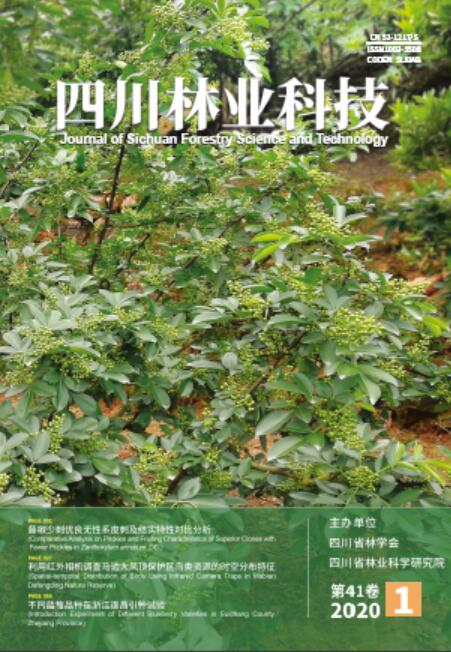


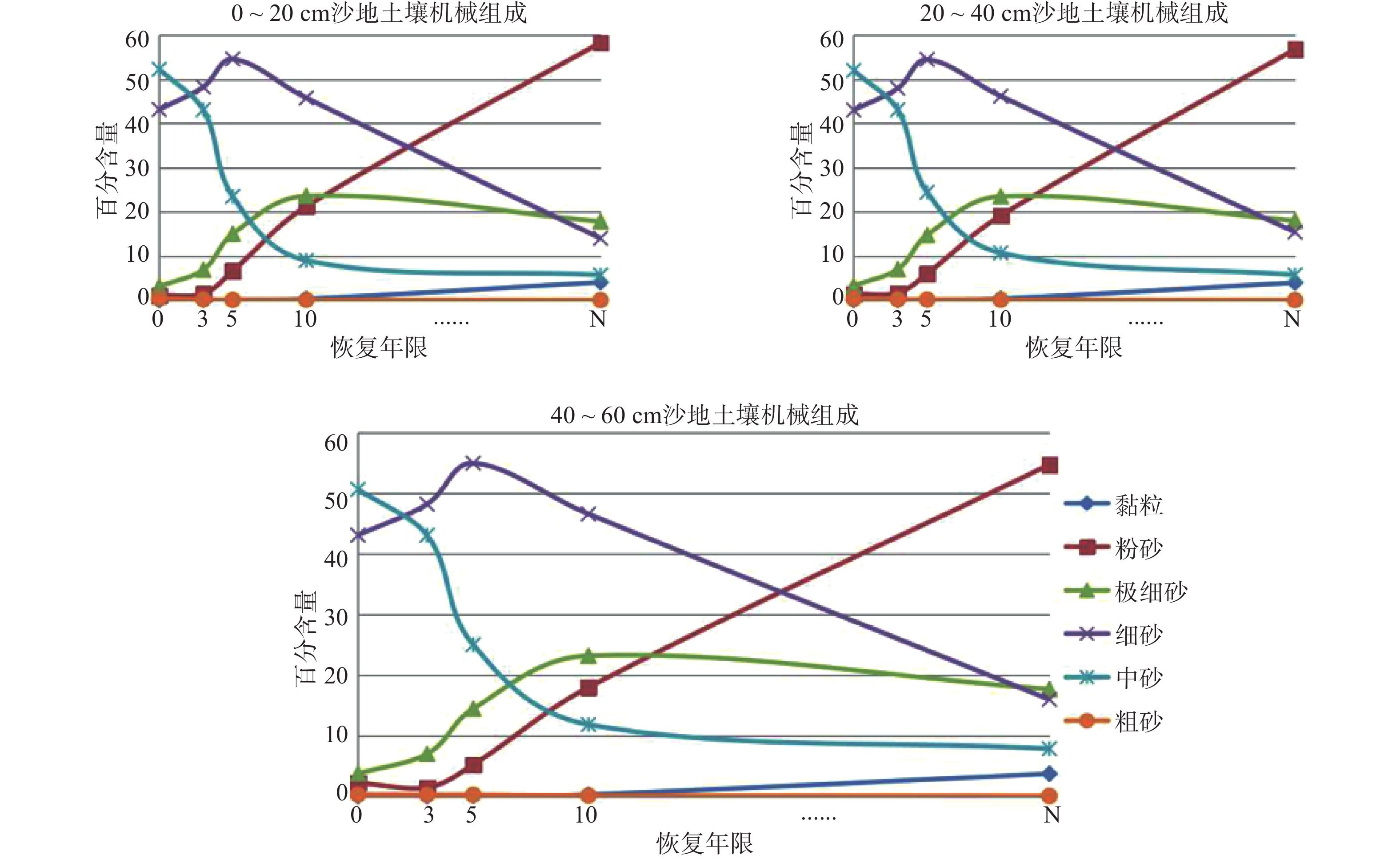


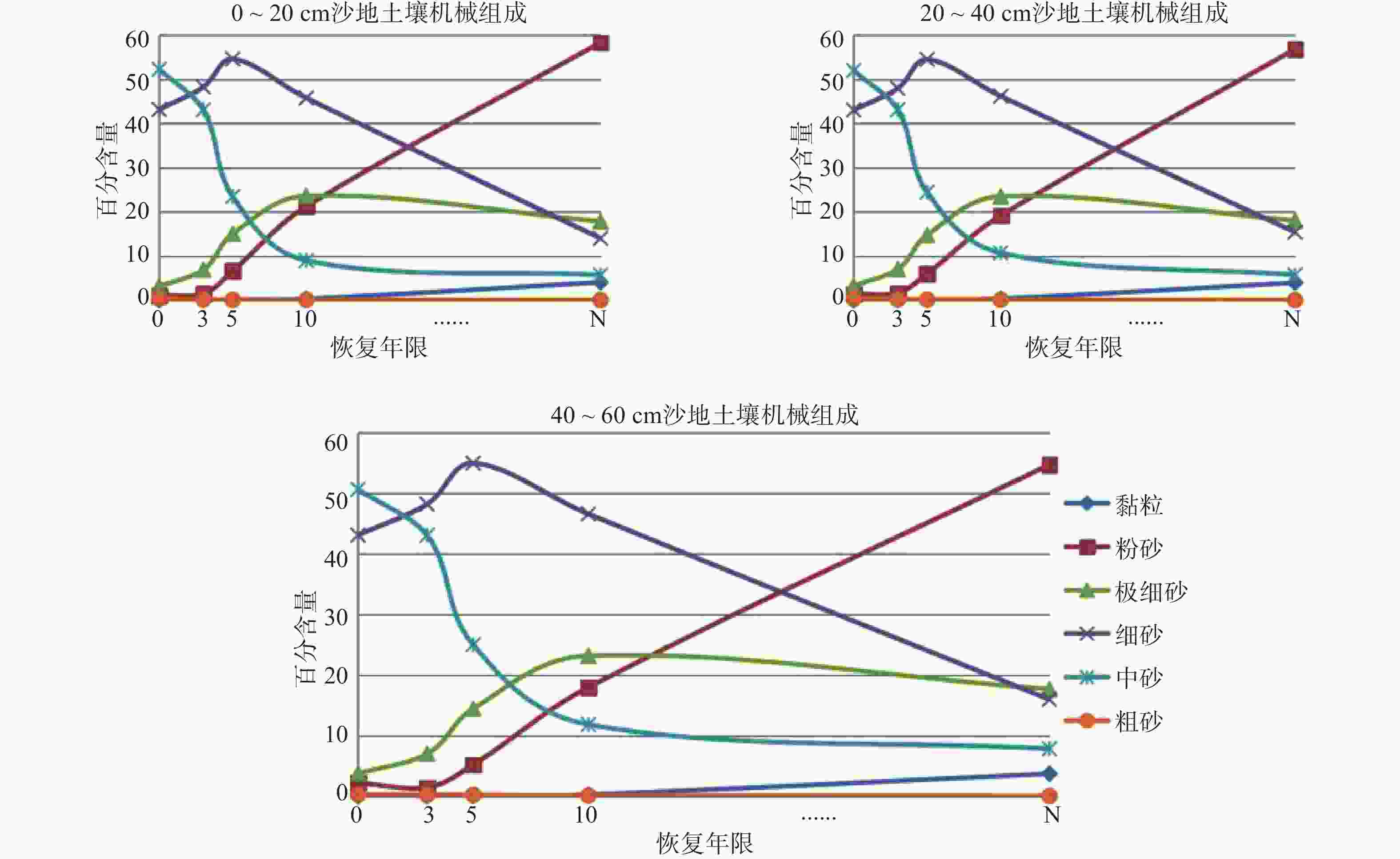
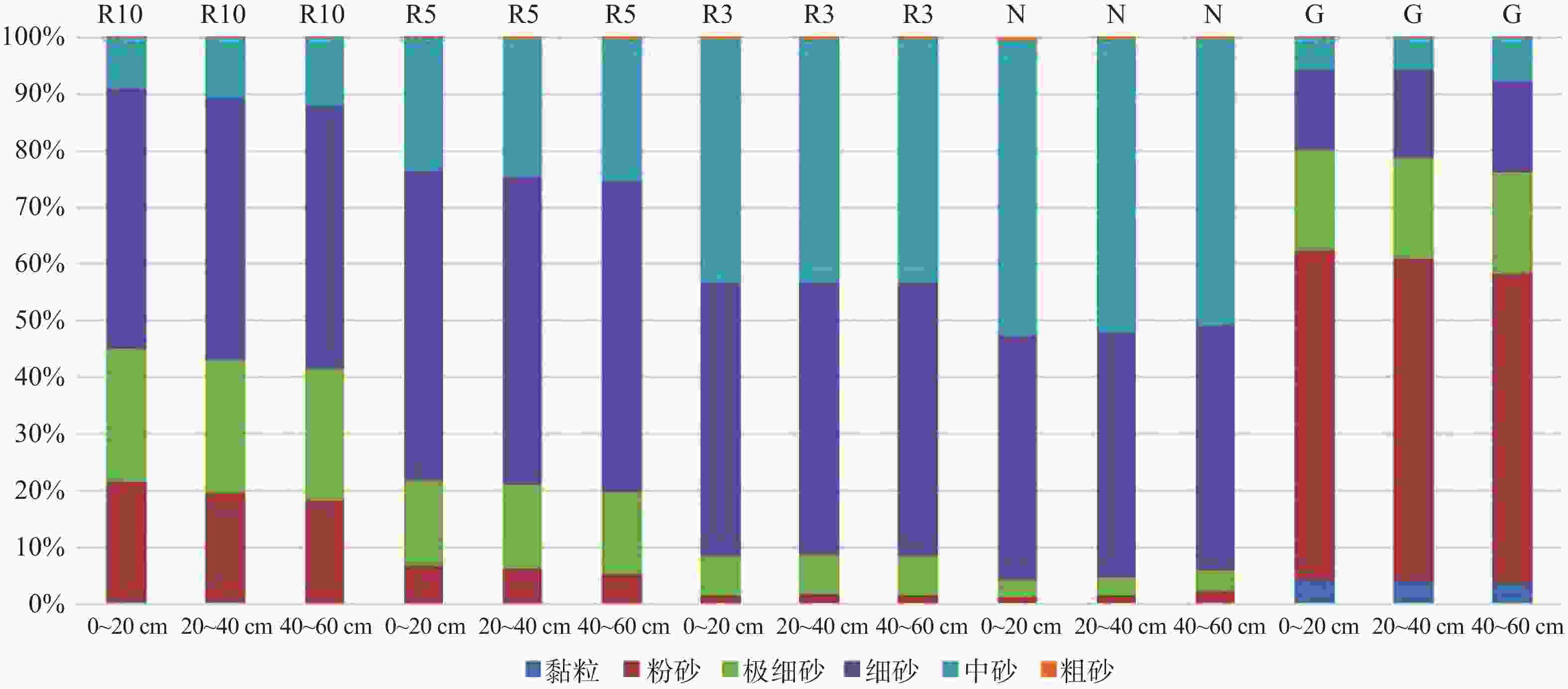
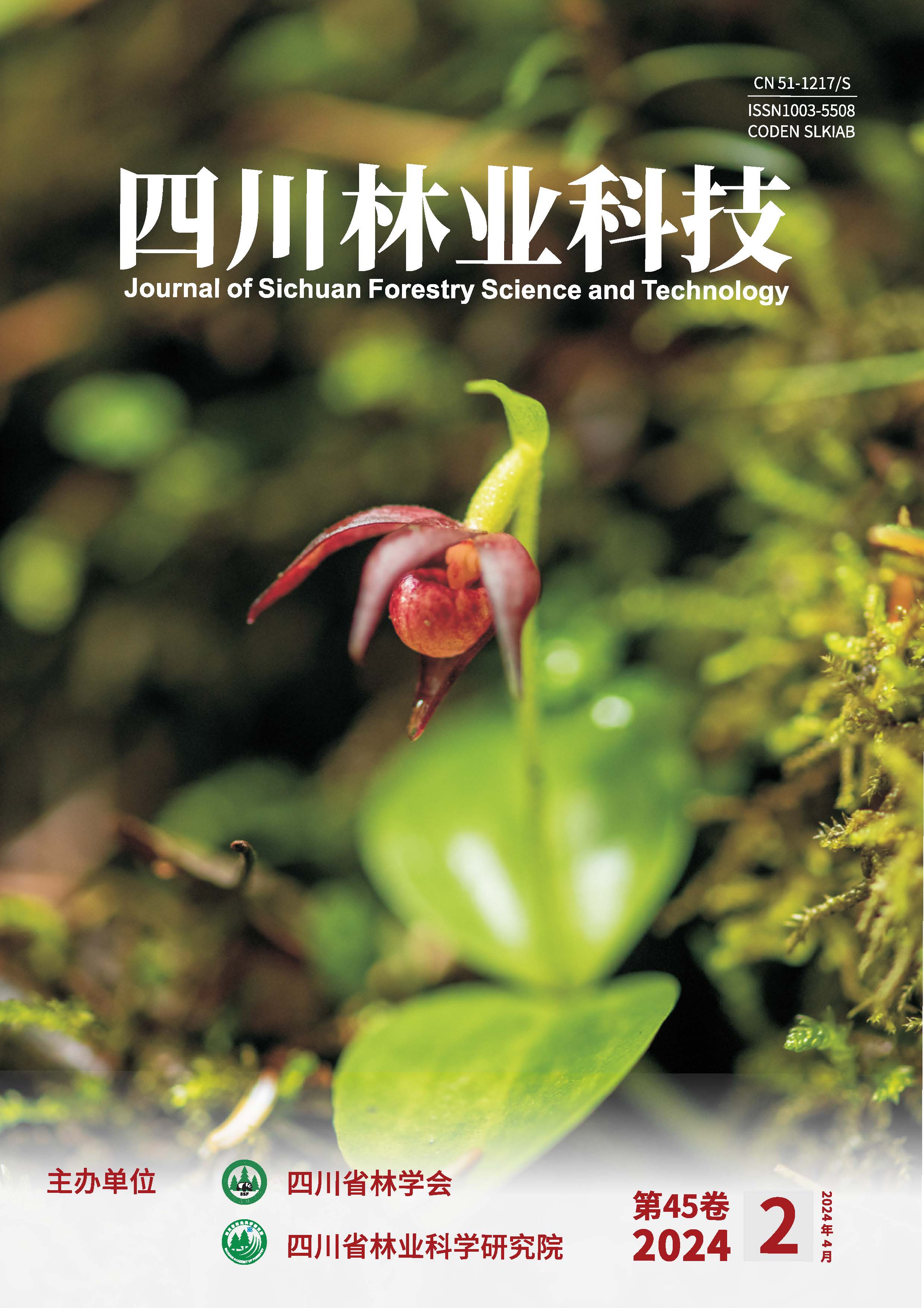
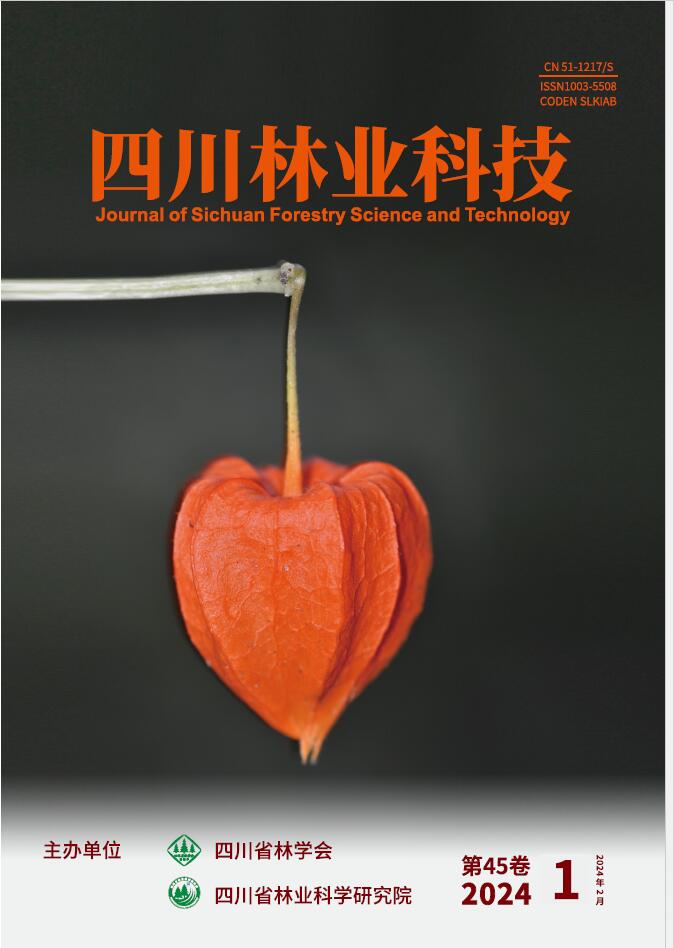
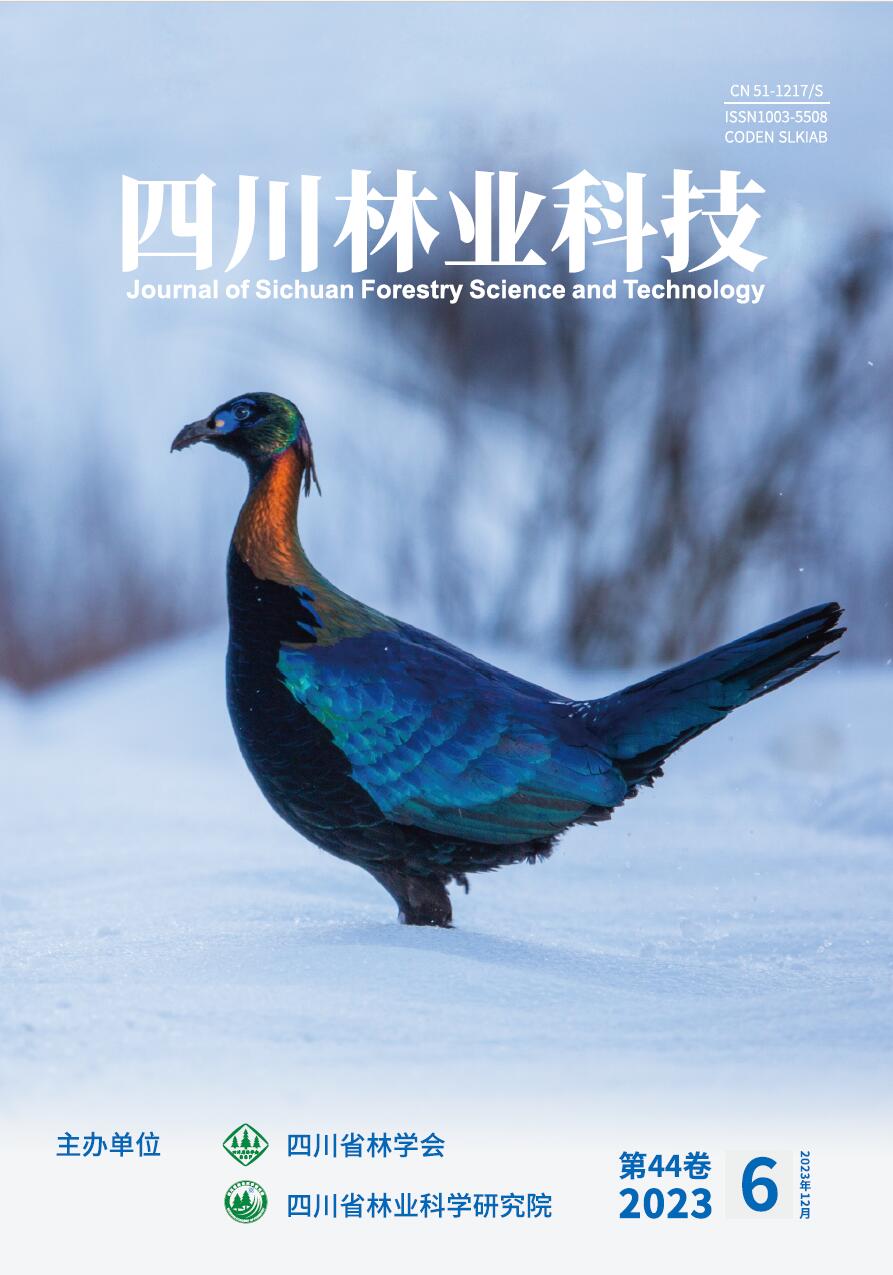
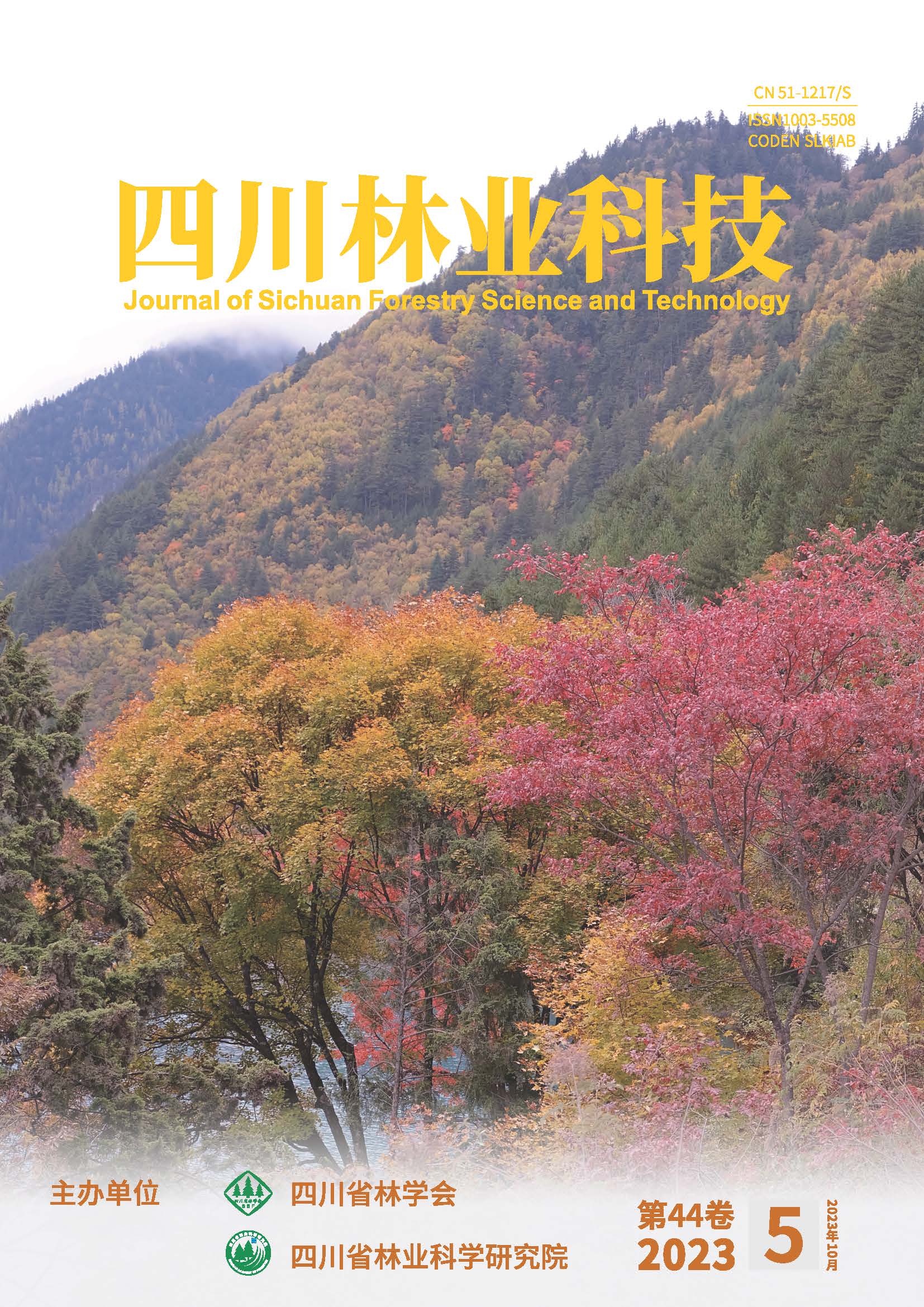
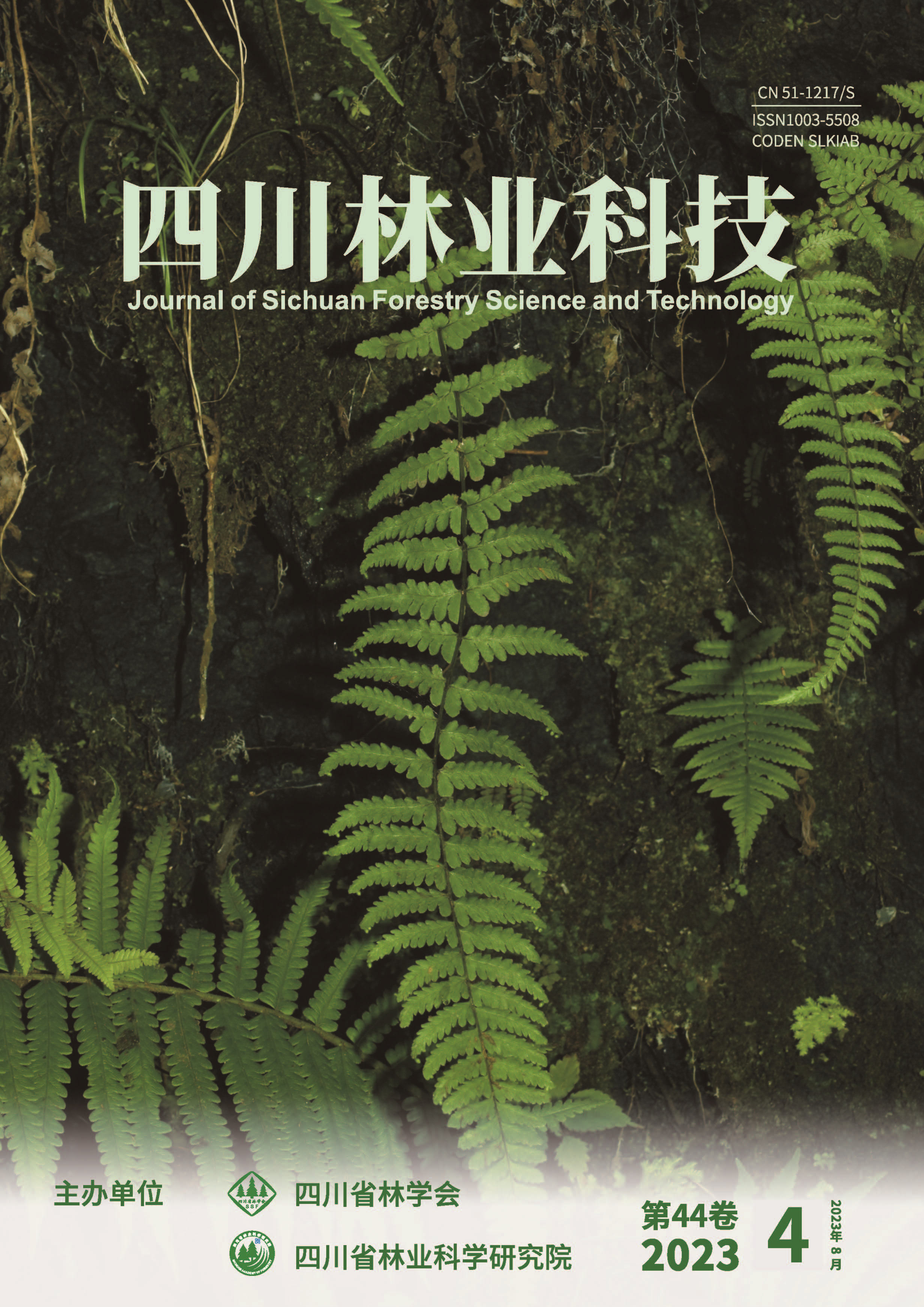
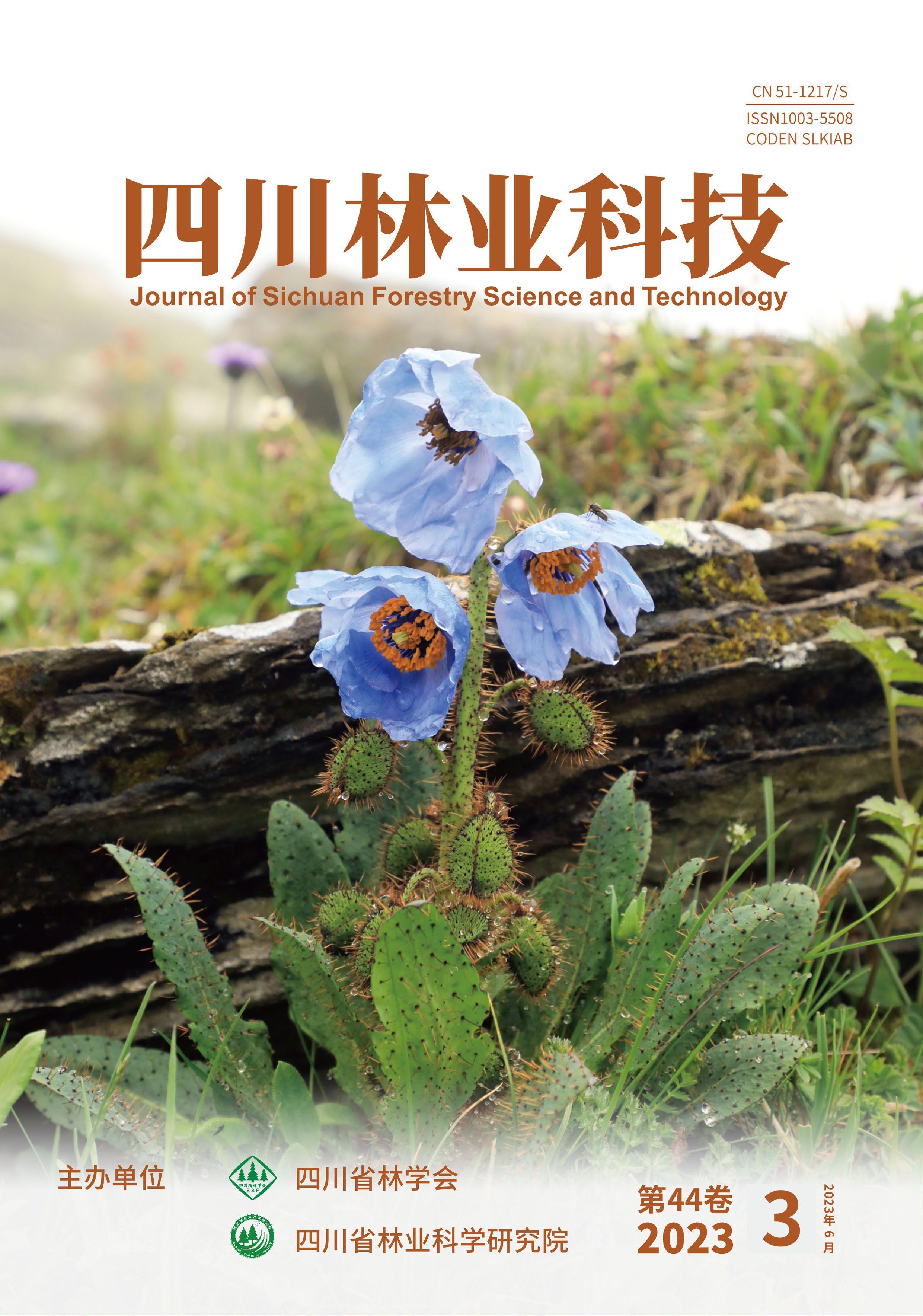
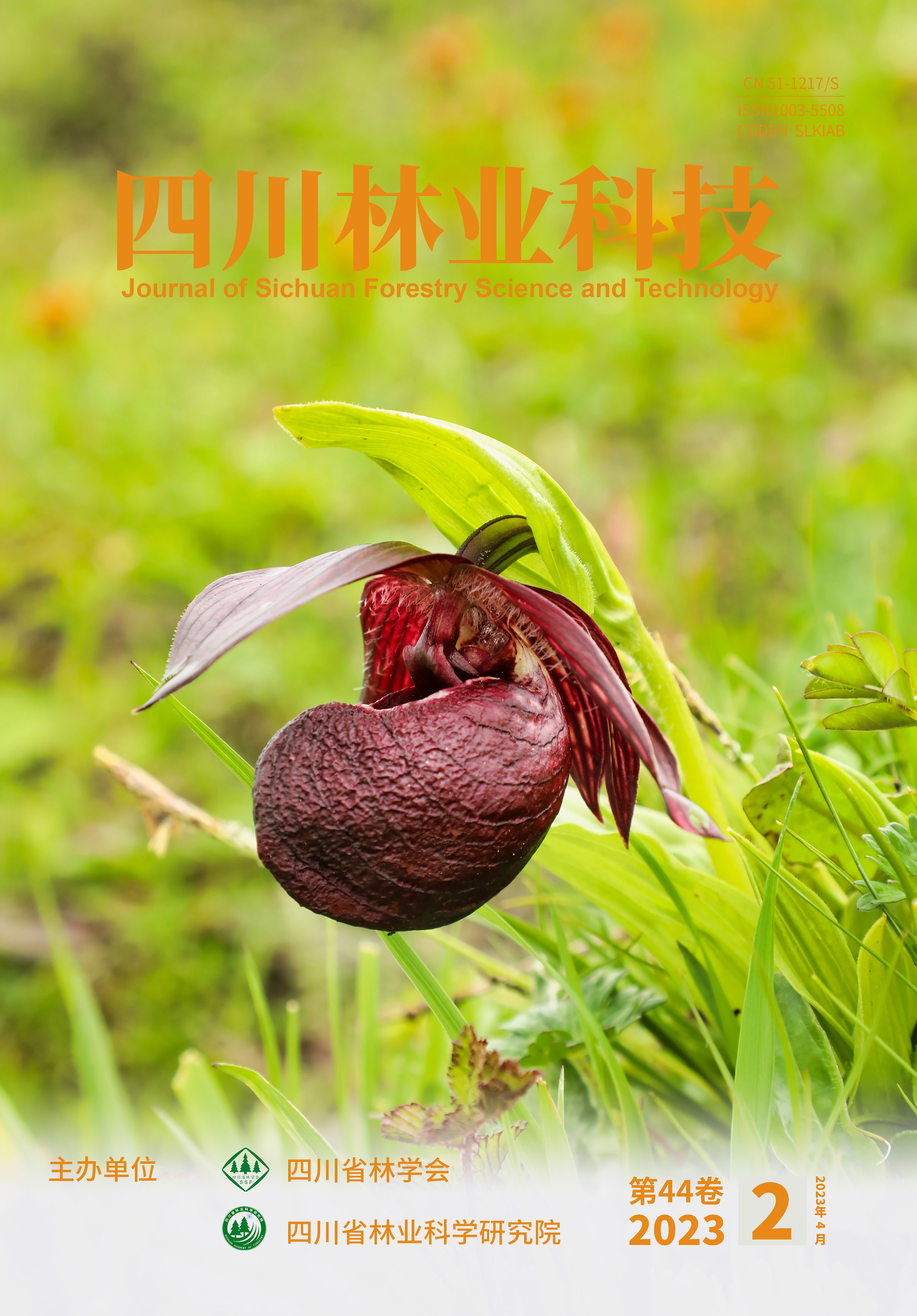
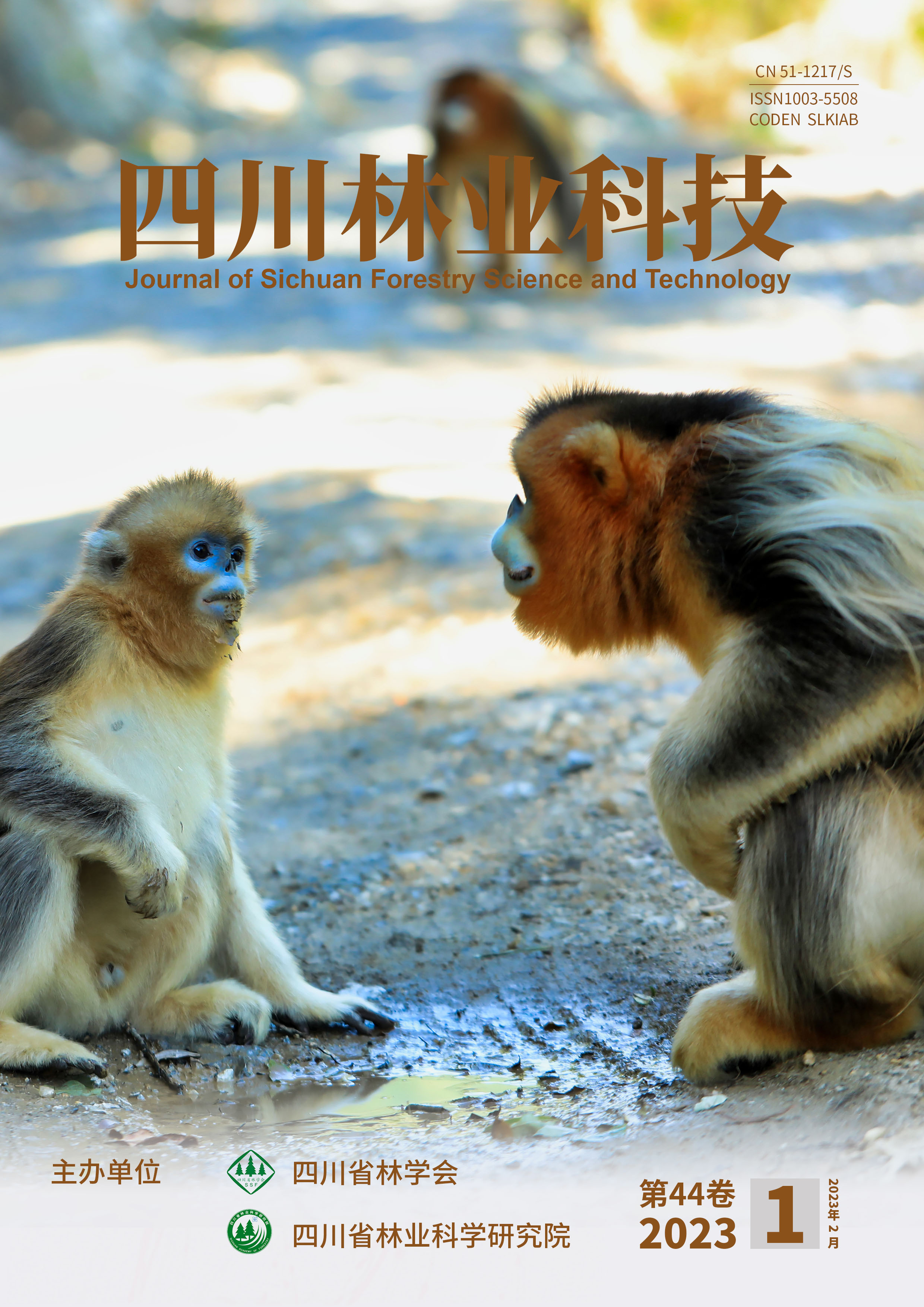


 DownLoad:
DownLoad:
